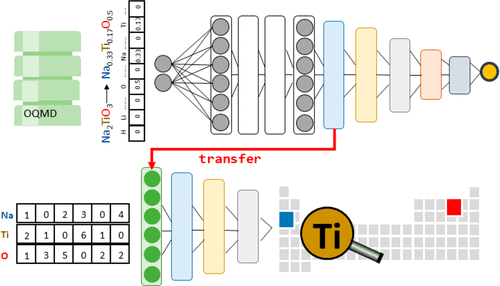当前位置:
X-MOL 学术
›
J. Chem. Inf. Model.
›
论文详情
Our official English website, www.x-mol.net, welcomes your feedback! (Note: you will need to create a separate account there.)
Leveraging Transfer Learning and Chemical Principles toward Interpretable Materials Properties
Journal of Chemical Information and Modeling ( IF 5.6 ) Pub Date : 2021-08-26 , DOI: 10.1021/acs.jcim.1c00434 Liyuan Huang 1 , Chen Ling 1
Journal of Chemical Information and Modeling ( IF 5.6 ) Pub Date : 2021-08-26 , DOI: 10.1021/acs.jcim.1c00434 Liyuan Huang 1 , Chen Ling 1
Affiliation

|
Machine learning is emerging as a new paradigm to rationalize chemical properties for deepening our understanding of chemistry and providing instructive clues on better materials performance. While the complex architecture of machine learning contributes to unprecedented capability in this task, it prevents easy interpretation, leading to extensive criticisms on the lack of physical foundations for the black-box like models. Here, we demonstrate a transfer learning strategy that leverages fundamental principles of chemistry to offer adequate physical insights for the interpretation. Through interpreting the models for the formation energies of inorganic compounds, the proposed strategy revealed the deficiency of deep neural network in handling interelemental patterns and proved the more proper abstraction of recurrent neural network with attention mechanism, which led to predicting the elegant form of periodic table with high precision. The success demonstrates a new solution toward models with full transparency in materials informatics.
中文翻译:

利用迁移学习和化学原理实现可解释的材料特性
机器学习正在成为一种新的范式,可以使化学性质合理化,以加深我们对化学的理解,并为更好的材料性能提供指导性线索。虽然机器学习的复杂架构在这项任务中提供了前所未有的能力,但它阻止了简单的解释,导致对类似黑盒模型缺乏物理基础的广泛批评。在这里,我们展示了一种转移学习策略,该策略利用化学的基本原理为解释提供足够的物理见解。通过解释无机化合物的形成能模型,所提出的策略揭示了深度神经网络在处理元素间模式方面的不足,并证明了具有注意力机制的递归神经网络更合适的抽象,从而可以高精度地预测元素周期表的优雅形式。成功展示了一种新的解决方案,该解决方案在材料信息学方面具有完全透明的模型。
更新日期:2021-09-27
中文翻译:

利用迁移学习和化学原理实现可解释的材料特性
机器学习正在成为一种新的范式,可以使化学性质合理化,以加深我们对化学的理解,并为更好的材料性能提供指导性线索。虽然机器学习的复杂架构在这项任务中提供了前所未有的能力,但它阻止了简单的解释,导致对类似黑盒模型缺乏物理基础的广泛批评。在这里,我们展示了一种转移学习策略,该策略利用化学的基本原理为解释提供足够的物理见解。通过解释无机化合物的形成能模型,所提出的策略揭示了深度神经网络在处理元素间模式方面的不足,并证明了具有注意力机制的递归神经网络更合适的抽象,从而可以高精度地预测元素周期表的优雅形式。成功展示了一种新的解决方案,该解决方案在材料信息学方面具有完全透明的模型。



























 京公网安备 11010802027423号
京公网安备 11010802027423号